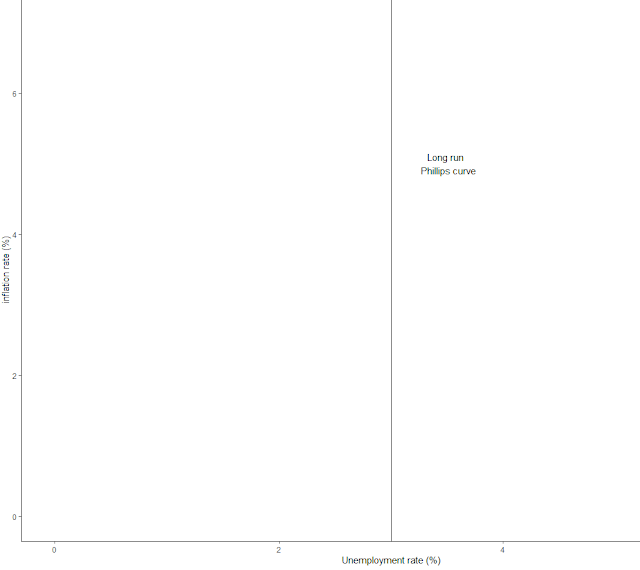- Short run Phillips curve: it represents a trade off between the level of inflation and the level of unemployment in the economy. Any change in the AD curve will produce a negative relationship between the inflation rate and unemployment rate.
- For example, an expansionary demand side policy will decrease the level of unemployment but increase the inflation rate (in the short run) and vice versa.
- The inverse relationship between inflation and unemployment implies that the Phillips curve is downward slopping.
- It also shows that deflation is related to high unemployment, think about the AD curve shifting to the left.
- A shift in AD is just a movement along the Phillips curve.
- When the SRAS shifts, the Phillips curve shifts in the opposite direction.
- Long run Phillips curve: the curve is inelastic, implying that there is no trade off between inflation and employment.
- Shift in SRAS to the right, the AD curve will shift to the left to reach, once again, LRAS. The impact on the short run Phillips curve will be: the curve firsts shifts to the left, and then there is a downward movement along the curve.
- From the example above, we see that in the long run, the change in inflation does not impact the natural rate of unemployment.
- A shift in the LRAS curve will cause the long run Phillips curve to move in the opposite direction.
Reference: Welker, Jason. AP Maroeconomics Crash Course. Research & Education Association (2014). p 209-220.


Comments
Post a Comment